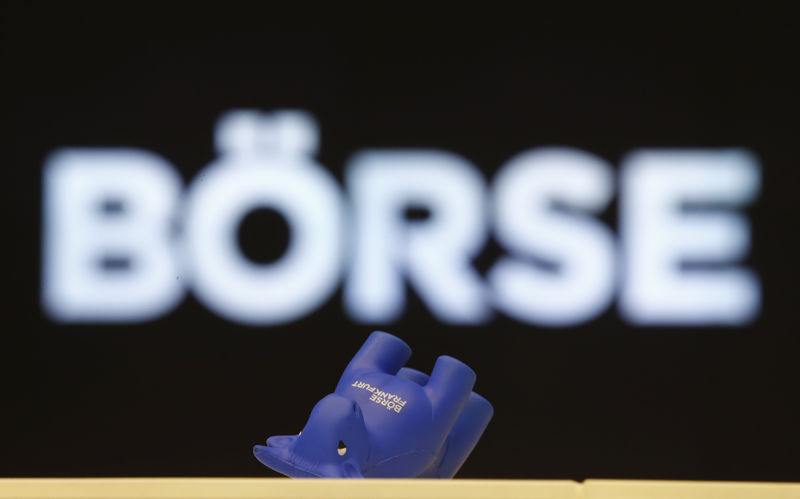By Peter Nurse
Investing.com - European stock markets are expected to open marginally higher Friday, helped by stronger than expected U.K. growth, but gains are likely to be limited given continued worries of lower growth as central banks lift interest rates while geopolitical risks remain.
At 02:00 ET (06:00 GMT), the DAX futures contract in Germany traded 0.2% higher, CAC 40 futures in France climbed 0.1% and the FTSE 100 futures contract in the U.K. rose 0.1%.
The major indices on Wall Street closed sharply lower Thursday, dragging stocks down in Asia early Friday, with Japan’s Nikkei index down 2%, and Europe is set to follow this trend.
The weakness in the U.S. stemmed from worries that the Federal Reserve will continue its aggressive fight against inflation, with the weekly jobless claims number showing that the U.S. labor market remains resilient, giving the policy makers a green light to continue tightening monetary policy.
Back in Europe, Thursday’s hot German inflation print suggests the European Central Bank will have to get more aggressive if it wants to tame inflation running at historic levels.
However, stock markets were given a boost after U.K. GDP rose 0.2% quarter-on-quarter in the second quarter, up 4.4% on an annual basis, surprising to the upside.
There are more economic data releases to study Friday, including German unemployment and most importantly the Eurozone CPI number for September, which could rise close to 10% on an annual basis.
Official data from China earlier in the day showed that manufacturing activity unexpectedly grew in September, breaking two straight months of decline, but a separate private survey by Caixin painted a very different picture, as the country's manufacturing PMI shrank to 48.1 in September from 49.5 in the prior month.
Elsewhere, Russian President Vladimir Putin is set to host a Kremlin ceremony on Friday annexing the four regions of Ukraine that recently voted to join Russia in referendums condemned by Ukraine and the West.
The U.S. and the European Union are set to impose additional sanctions on Russia over this move, and EU energy ministers are scheduled to meet later Friday to discuss their options.
Oil prices traded largely flat Friday, but are heading for the first quarterly drop in two years on continued fears over a global economic slowdown as central banks significantly tighten monetary policy to tackle inflation.
Next week sees the latest get-together of the Organization of the Petroleum Exporting Countries and allies, together called OPEC+, amid speculation that the group will agree to cut crude output in order to support falling prices.
By 02:00 ET, U.S. crude futures traded marginally higher at $81.25 a barrel, while the Brent contract rose 0.1% to $87.22.
Both benchmarks are on track to rise by about 2% for the week, their first weekly rise since August, after hitting nine-month lows earlier in the week. However, they are also set to drop around 10% this month, the fourth losing month in a row, and losses for the quarter amount to around 23%.
Additionally, gold futures rose 0.4% to $1,675.65/oz, while EUR/USD traded 0.1% higher at 0.9823.
